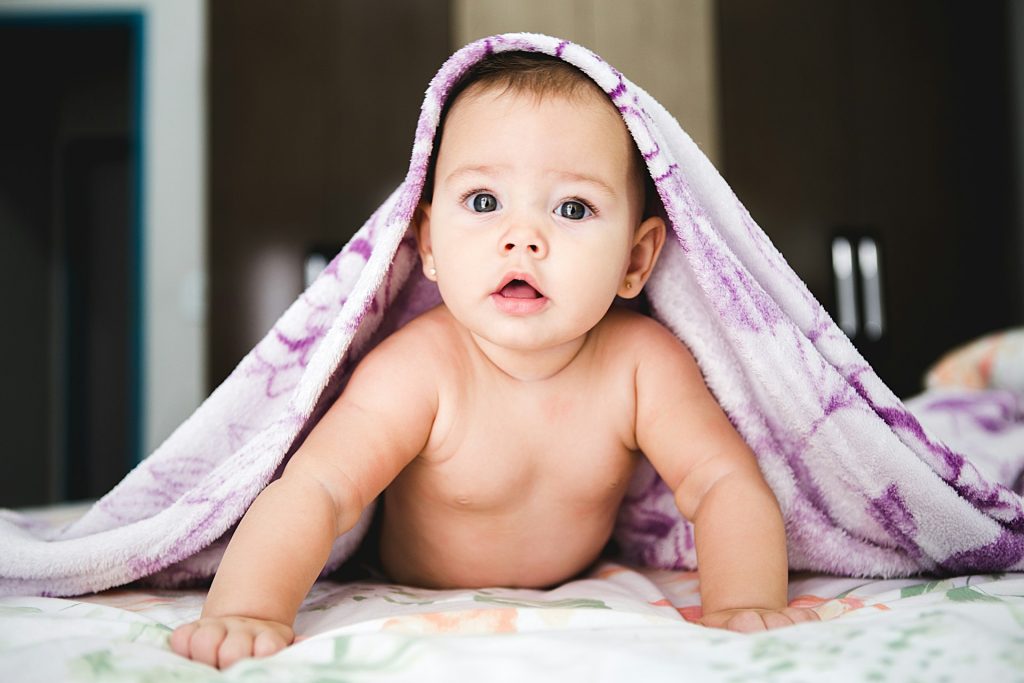
Parenting has come a long way since the days of latchkey kids and helmet-free bike rides. In our quest to keep children secure, we’ve introduced a host of modern safety gear that previous generations never imagined—everything from padded edge guards to harness backpacks.
While these innovations can bring peace of mind, they also raise a key question: Are we truly making our kids safer, or are we wrapping them in bubble wrap and stifling their natural growth?
Below, we explore eight popular safety items that didn’t exist when we were kids, weighing the benefits against the possibility that we might be overdoing it.
After all, a certain amount of risk-taking helped many of us learn our limits and discover our strengths. Let’s see where these modern solutions fit in.
1. Baby Knee Pads
Designed to cushion little knees on hard floors, knee pads have become trendy with fun designs and plush materials. While they can help if your baby has specific sensitivities or if you have rough flooring, most experts say bare knees do just fine.
Crawling is a developmental milestone involving strength and coordination—letting babies feel the surface with their skin can be beneficial. If anything, knee pads might alter their natural movement pattern.
2. Toddler Leashes (Safety Harness Backpacks)
Few topics spark debate as quickly as toddler leashes. Proponents praise them for preventing little ones from bolting off in crowded places. Detractors worry they create a false sense of security and take away opportunities to teach boundaries. Parents in the past managed without these harnesses, relying on close supervision and hand-holding. If you do opt for a leash-style backpack, keep in mind it’s a short-term solution—teaching awareness and listening skills still matters most in the long run.

3. Outlet Covers with Sliding Doors
Gone are the days of simply plugging plastic caps into unused outlets. Modern versions include sliding doors that spring shut when a plug is removed, claiming to be even more tamper-proof. While they can offer an extra layer of security, they also tend to be trickier to install.
Realistically, constant supervision and teaching children about off-limits areas can be just as effective. Use them if they add peace of mind, but don’t let them lull you into ignoring basic safety practices.
4. Padded Edge and Corner Guards
Yes, toddlers trip a lot. Soft foam covers for coffee tables, counters, and other sharp edges have become standard in baby-proofing aisles. They do reduce the impact of minor collisions, but a watchful eye and thoughtful furniture arrangement go a long way, too.
Past generations managed with fewer gadgets, focusing on guiding kids to navigate their environment. If you use padded guards, consider them a supplement—not a replacement—for vigilance.
5. Rear-View Mirrors for Car Seats
These add-on mirrors let you keep an eye on your rear-facing baby while driving, supposedly easing parental anxiety. However, constantly glancing at that mirror could distract you from the road. Previous generations didn’t have them and somehow stayed alert to their babies’ needs. If you’re genuinely worried, pull over to check on your little one rather than taking your eyes off traffic.
6. Anti-Tip Furniture Straps
Unlike some other gear on this list, anti-tip straps address a very real hazard. Dressers, bookshelves, and TVs can topple if kids climb on them. Modern furniture is often tall, lightweight, and less stable, so properly anchoring it to the wall can prevent serious injuries. This is one category where modern innovation clearly does save lives—no downside here.
7. Smart Baby Monitors with Breathing Sensors
Gone are the days of basic audio-only baby monitors. Today’s devices track breathing patterns, heart rate, and even room temperature. While this data can be reassuring, it can also trigger false alarms and heightened parental anxiety. Experts generally agree these monitors don’t necessarily prevent conditions like SIDS. If you find a high-tech monitor useful, great—just don’t let it replace good old-fashioned parental instinct and checking in person.
8. Inflatable Bath Cushions and Tubs
From inflatable inserts to foam mats, modern baths for babies boast extra cushioning and anti-slip features. They claim to reduce the risk of accidents, but your best safety measure is never leaving a child alone in the bath. Many parents from previous generations relied on kitchen sinks or simple plastic tubs with zero padding, supervised with unwavering attention. If an inflatable tub simplifies bath time for you, go for it—but remember that close supervision is what really keeps bath time safe.
Striking the Balance Between Protection and Parenting
All this modern safety gear can be a helpful ally in keeping your children from harm. Yet it’s important to recognize that no product can replace active, attentive parenting. While some of these gadgets provide real peace of mind and address genuine hazards, others might be more about marketing than necessity. Ultimately, trusting your intuition and focusing on hands-on interaction will do more for your child’s well-being than any invention possibly could.
What modern safety gear do you swear by—or skip entirely? Share your thoughts in the comments! Your experience may help other parents decide what truly makes sense for their family.
Read More
- 6 Dog Breeds That Will Fiercely Protect Your Children
- Becoming A Mom at 40: 8 Challenges and Rewards You Didn’t Expect

Samantha Warren is a holistic marketing strategist with 8+ years of experience partnering with startups, Fortune 500 companies, and everything in between. With an entrepreneurial mindset, she excels at shaping brand narratives through data-driven, creative content. When she’s not working, Samantha loves to travel and draws inspiration from her trips to Thailand, Spain, Costa Rica, and beyond.
Leave a Reply